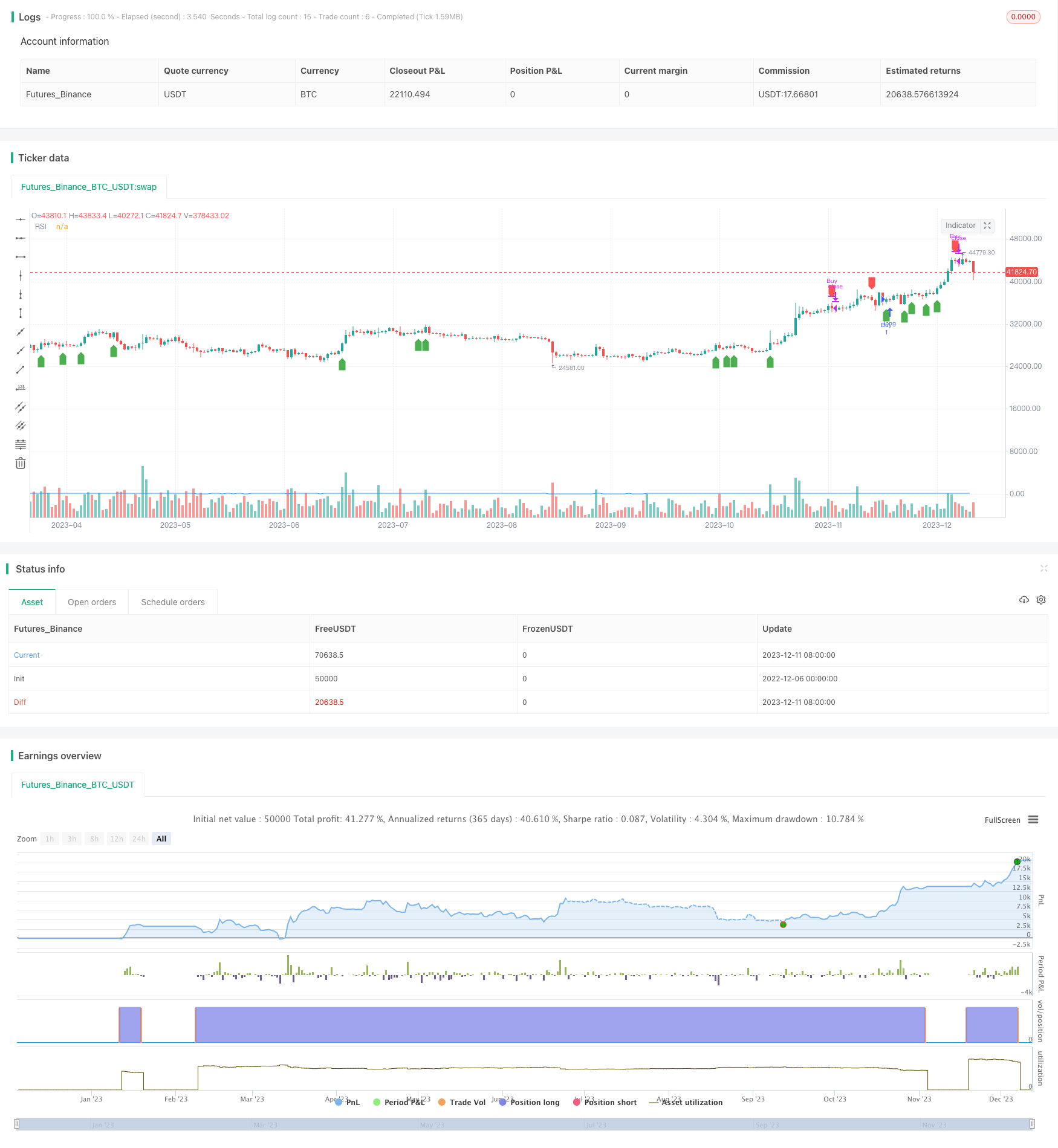
概述
动量轮回策略是一种基于相对强弱指标(RSI)的量化交易策略。该策略通过RSI指标交叉发出买卖信号,实现获利。当RSI上穿用户设定的阈值时产生买入信号; 当RSI下穿阈值时产生卖出信号,实施逐步获利。
策略原理
该策略基于RSI指标定制。RSI指标反映股票的市场动量和超买超卖情况。该策略首先计算RSI值,然后根据RSI与设定买入阈值和卖出阈值的关系进行交易。
具体来说,如果RSI上穿设定的买入阈值(默认60),则产生买入信号。策略此时会开仓买入股票。如果之后RSI下穿设定的卖出阈值(默认80),则产生卖出信号。策略此时会平掉之前的多仓。如此,通过RSI阈值之间的交叉运行,实现获利回撤的动量轮回。
该策略使用Pine Script语言编写,代码结构清晰。使用现代化的条件判断结构实现策略入场和出场逻辑。同时绘制RSI指标曲线,并在买卖点标记信号。
策略优势
- 利用股票价格动量特征,能够有效捕捉市场短期趋势
- RSI指标参数可调,对市场变化敏感
- 采用现代编程风格,代码清晰简洁
- 直观显示RSI曲线和买卖点,便于查看策略运行情况
- 可自定义RSI参数及买入卖出阈值,适应个性化需求
策略风险
- 短期操作风险大,需要密切关注市场变化
- 可能出现虚假信号,RSI指标发出错误信号的概率存在
- 匆忙入场有追高杀跌风险,应审慎操作
- 未考虑止损机制,无法有效控制单笔损失
针对上述风险,我们可以设置止损线,优化RSI参数,结合其他指标进行滤波等方法进行改进。
策略优化方向
我们可以从以下几个方面继续优化该策略:
- 结合移动平均线等指标构建过滤机制,减少虚假信号
- 添加止损逻辑,控制单笔损失
- 优化RSI参数,identifying适合的股票和市场环境
- 开发能够动态调整参数的自适应交易系统
- 测试不同的持仓时间,寻找最优策略参数组合
总结
本策略作为一个基础示例,展示了如何利用RSI指标进行量化交易。我们可以在此基础上进行扩展,结合更多指标和风控手段来建立交易体系。在实际运用时,需要对参数进行反复优化测试,并结合个人风险偏好进行调整。采用严谨的方法论和风控体系,本策略可以成为有效的量化投资工具。
策略源码
/*backtest
start: 2022-12-06 00:00:00
end: 2023-12-12 00:00:00
period: 1d
basePeriod: 1h
exchanges: [{"eid":"Futures_Binance","currency":"BTC_USDT"}]
*/
//@version=5
strategy("RSI Cross 60/80 Strategy", overlay=true)
// Input for RSI period
rsiPeriod = input.int(14, title="RSI Period", minval=1)
// Calculate RSI
rsiValue = ta.rsi(close, rsiPeriod)
// Input for RSI thresholds
rsiBuyThreshold = input(60, title="RSI Threshold for Buy")
rsiSellThreshold = input(80, title="RSI Threshold for Sell")
// Conditions for Buy and Sell signals
buySignal = ta.crossover(rsiValue, rsiBuyThreshold)
sellSignal = ta.crossunder(rsiValue, rsiSellThreshold)
// Plot RSI on the chart
plot(rsiValue, title="RSI", color=color.blue)
// Strategy entry and exit
if (buySignal)
strategy.entry("Buy", strategy.long)
if (sellSignal)
strategy.close("Buy")
// Plot Buy and Sell signals on the chart
plotshape(series=buySignal, title="Buy Signal", color=color.green, style=shape.labelup, location=location.belowbar)
plotshape(series=sellSignal, title="Sell Signal", color=color.red, style=shape.labeldown, location=location.abovebar)